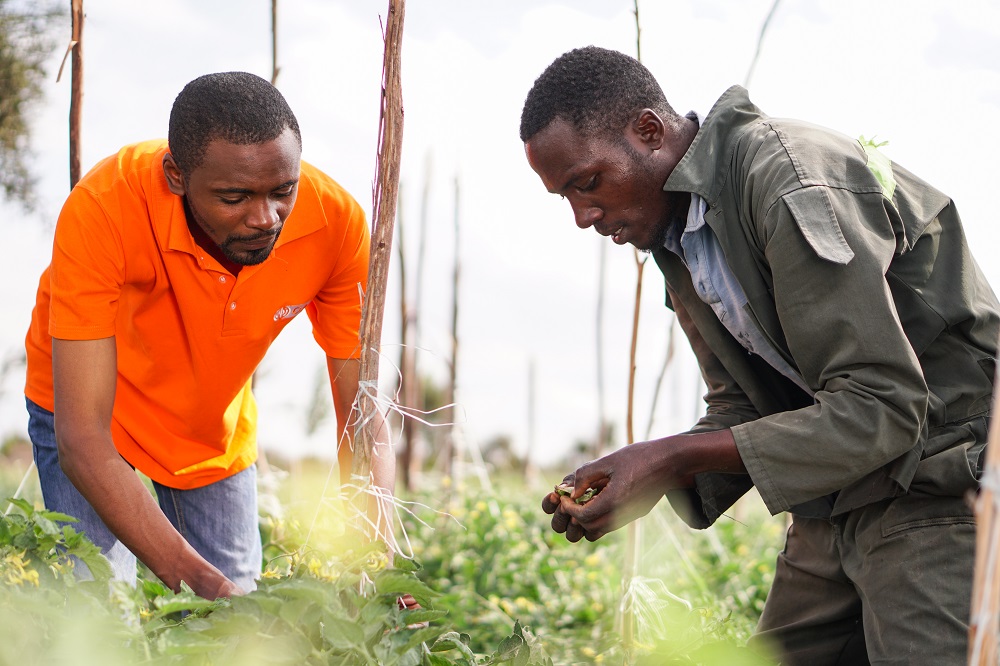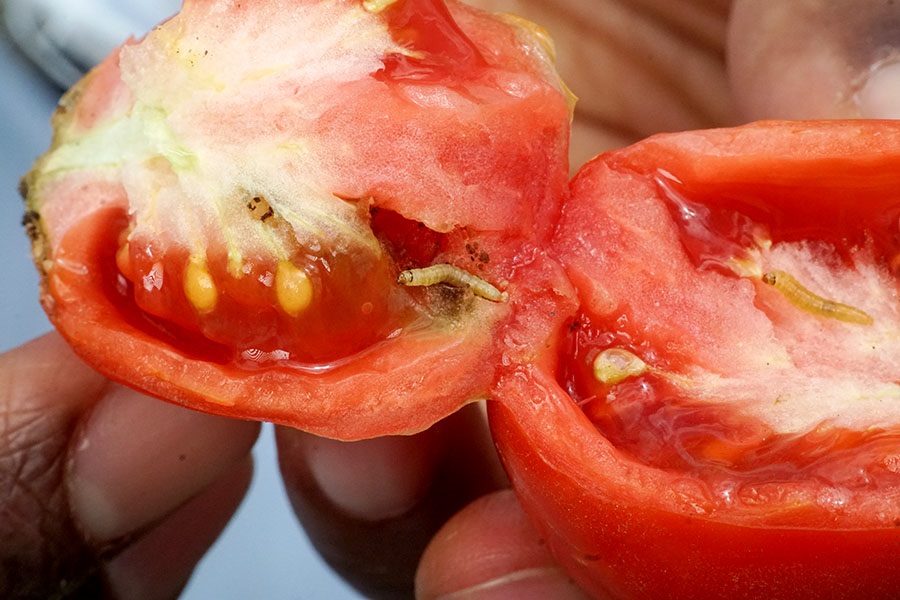
The environmental tolerances and potential range of the tomato pest Tuta absoluta in Africa, the Arabian Peninsula, Central Asia and Australia may have been underestimated according to new research co-authored by CABI scientists.
All results from the scientists’ research suggests with the greatest certainty that T. absoluta (also known as Phthorimaea absoluta or tomato leafminer) has further to spread globally, particularly in southern and East Asia, Australia and Central America.
A study led by Dr Regan Early of the University of Exeter and published in the journal Pest Management Science suggests that multiple crop pest forecasting tools – statistical Species Distribution Models (SDMs) and CLIMEX – be combined, as an ensembled approach changes expectations of T. absoluta’s spread.
The research, which includes contributions from CABI’s Dr Roger Day and Dr Ivan Rwomushana together with Dr Gilson Chipabika of the Zambia Agriculture Research Institute, shows that the accuracy of previously developed CLIMEX and new statistical SDMs were comparable in some regions of the world but that the best statistical SDM techniques and environmental data substantially outperformed CLIMEX.
The scientists recommend that CLIMEX be considered one of a suite of SDM techniques and evaluated formally and that CLIMEX and statistical SDMs should be compared and ensembled where possible. They provide code that can be used to do so when employing the biomod suite of SDM techniques.
T. absoluta is arguably the most important pest of tomato. Native to South America, it has since spread to different parts of the world and is responsible for yield losses of between 50-100 percent as a result of direct and indirect damage. For instance, Early et al point out that 21.5 percent of surface cultivated (0.95 million ha) and 27.2 percent of tomato production (41 million tonnes) had been infested by T. absoluta between 2006 and 2011.

The best performing ensemble statistical SDMs project suitable conditions in the eastern part of south America, in central America and the southern USA, in southern Europe, North Africa, the Arabian Peninsula, India, a strip of Africa below the Sahara, and eastern and southern Africa.
However, ensemble statistical SDM projections disagree over the extent of suitable conditions in China, Australia, South Africa, northern Europe, and Central Asia. The best, ensemble projection suggests that the ultimate global distribution of year-round populations in India may be limited to the west, in China may be limited to the south and west, in Australia may be limited to the South, and in Europe may be fairly widespread in the south and west.
Dr Early said, “Forecasting the spread of emerging pests is widely requested by pest management agencies in order to prioritise and target efforts to mitigate their impacts.
“Two widely used approaches are statistical Species Distribution Models (SDMs) and CLIMEX, which uses ecophysiological parameters. Each have strengths and weaknesses. SDMs can incorporate almost any environmental condition and their accuracy can be formally evaluated to inform managers.
“However, accuracy is affected by data availability and can be limited for emerging pests, and SDMs usually predict year-round distributions, not seasonal outbreaks. CLIMEX can formally incorporate expert ecophysiological knowledge and predicts seasonal outbreaks.
“We argue that both approaches can be informative and complementary, but we need tools to integrate and evaluate their accuracy.”
The scientists contend that if species’ range projections are to be used for management purposes, multiple modelling techniques should be used, numerically evaluated against independent or semi-independent data on the species’ known distribution, and the uncertainty and any potential causes interpreted for end-users.
Dr Day said, “With respect to T. absoluta, the final best estimate suggests T. absoluta’s potential range in Africa, Arabian Peninsula, Central Asia, and Australia will be larger than previous estimates based on CLIMEX alone.
“T. absoluta may currently be prevented from spreading further in parts of China and southeast Asia due to high forest cover, but this effect is not certain and merits further investigation, as does the pest’s absence SDM-projected suitable areas in southeast USA.”
Additional information
Main image: extension worker and farmer scout for Tuta absoluta on a tomato crop in Kenya (Credit: CABI).
Additional information
Main image: extension worker and farmer scout for Tuta absoluta on a tomato crop in Kenya (Credit: CABI).
Full paper reference
Early, R., Rwomushana, I., Chipabika, G., Day, R., ‘Comparing, evaluating, and combining statistical Species Distribution Models and CLIMEX to forecast the distribution of emerging crop pests,’ Pest Management Science, 13 October 2021, DOI: https://doi.org/10.1002/ps.6677
The paper can be read here.
Related News & Blogs
Biological control in action: Zambia’s field days on fighting fall armyworm
Experts from CABI recently held two field days and an expo in Zambia, showcasing innovative approaches to pest management to 584 farmers, agro-dealers and other stakeholders to help raise awareness of approaches to tackle the invasive fall armyworm (Sp…
11 June 2025




